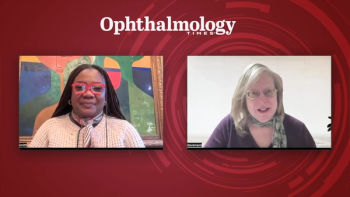
ASRS 2025: A look at secondary scleral-sutured toric intraocular lens for astigmatic correction in the absence of capsular support
Matthew Starr, MD, an assistant professor of ophthalmology and residency program director at Mayo Clinic, presented research on improving vision outcomes for patients requiring secondary intraocular lenses with significant corneal astigmatism at the ASRS 2025 meeting. The meeting was held in Long Beach, California from July 30 through August 2, 2025.
Currently, retina surgeons achieve approximately 80% refractive outcomes within a diopter of the target, compared to cataract surgeons' 90-95% success rate. This study aimed to bridge this gap by addressing corneal astigmatism through a specialized surgical approach. The research focused on patients with regular corneal astigmatism, excluding those with irregular corneas or corneal ectasia. The surgical technique involves:
- Preoperatively marking the axis of steep astigmatism
- Placing toric sutures around that specific axis
- Implanting a Bausch + Lomb enVista hydrophobic lens MX60T
Key study findings include:
- 67% mean reduction in percent cylinder post-operatively
- A quarter of patients achieved less than one diopter of astigmatism
- Significant reduction in preoperative mean astigmatism
Starr emphasizes several important points:
- All lenses used are currently off-label
- The technique is viable for motivated patients seeking vision improvement
- The goal is not complete spectacle independence, but meaningful vision enhancement
- Any astigmatism reduction can significantly improve overall vision quality
Starr noted that he became more selective about which patient selection, preferring candidates with larger astigmatism amounts. He believes this approach represents an important advancement in retina surgical outcomes. The broader implications of this research include:
- Encouraging retina surgeons to consider refractive outcomes
- Providing a new option for patients with corneal astigmatism
- Pushing the field forward by improving surgical techniques
Future steps involve continued refinement of the technique, focusing on patient counseling, precise suturing, and optimal lens placement to maximize vision improvement for patients requiring secondary intraocular lenses.
Newsletter
Don’t miss out—get Ophthalmology Times updates on the latest clinical advancements and expert interviews, straight to your inbox.













































